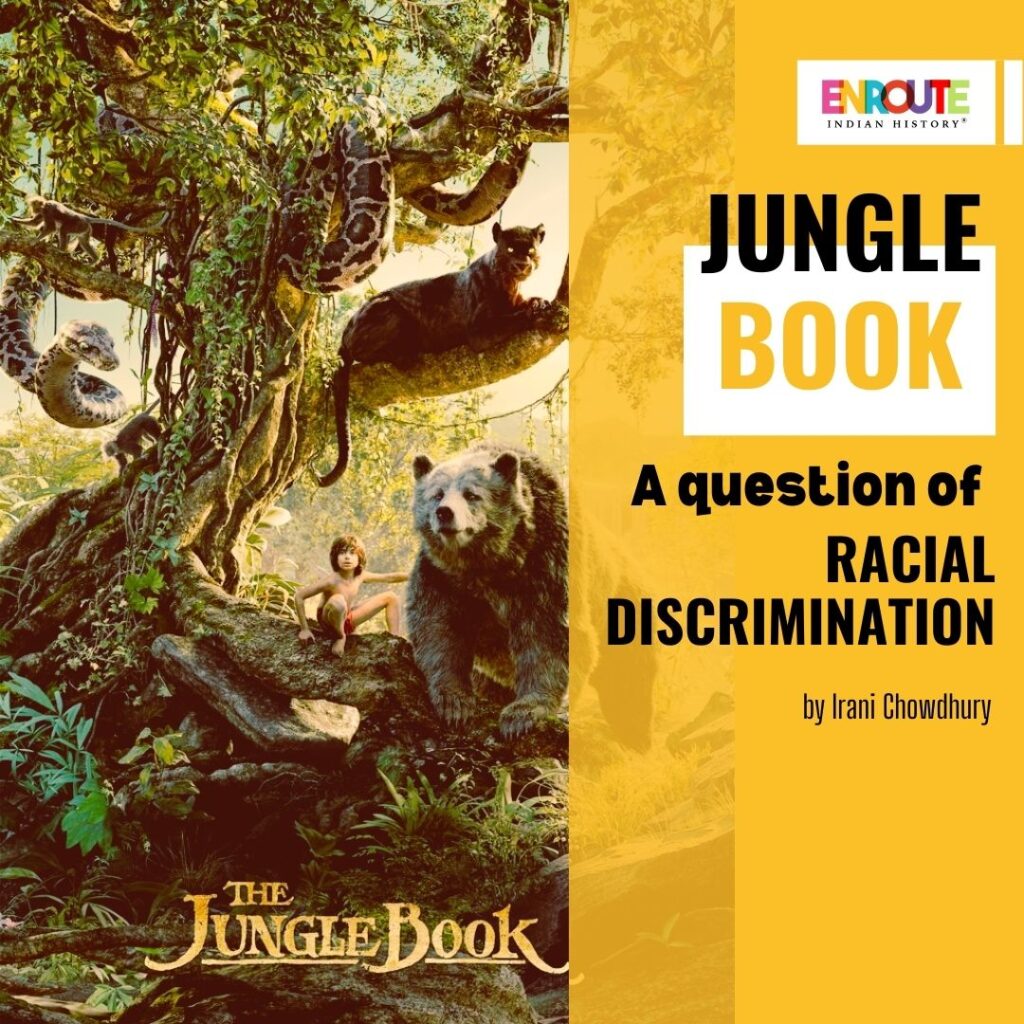
Article Written By EIH Researcher And Writer
Irani Chowdhury
During his second visit to India at the age of seventeen, Rudyard Kipling, the author of The Jungle Book, observed and cataloged the minutiae of the country. If ‘Nothing matters more than being white’ was the concept, then ‘How can natives be threatening to the colonizers?’ would always remain the question. But the question was answered, the sepoy mutiny took place, and with that, the rebellious, cunning, unfaithful natives became the threatening, dehumanized species.
Though widely considered a children’s story, the portrayal of speaking animal characters and the ‘man-cub’ Mowgli in The Jungle Book tells a tale of allegory– The apologue of the British Raj in India.
As a post-mutiny imperialist author, Kipling kept the essence of the white man’s pride alive through his writing. He believed that white men must conquer, rule, and civilize the non-white races. For him, it was pointless for Indians to be able to get peace, justice, and security without being ruled by the British. That’s why his writing enlivens India–as a British- colonized country.
Humanization of the colonizer and animalization of the colonized brings out the theme of imperial superiority, where the human child represents the white colony and ends up ruling the jungle. In Jhon McClure’s words, Mowgli behaves towards the beasts as “the British do to the Indians.”
In Mowgli’s stories, Mowgli is accompanied and helped by the Baloo, the Bagheera, and the Akela, who render the depiction of the Indian adulator but also jeopardize the supremacy of race, order, and hierarchy from a chauvinistic point of view. Whereas Shere khan, the tiger, was portrayed as obstreperous for his unfaithful, ferocious nature.
The racial dilemma between human and animal blood initially made Mowgli unfamiliar with the rules of the jungle, but shortly he became the ruler. Following the theory of Darwin, Mowgli has passed through all the phases and becomes a human as he asserts: “Mowgli the Frog have I been, Mowgli the Wolf have I said that I am. Now Mowgli the Ape I must be before I am Mowgli the Buck. At the end, I shall be Mowgli the man.”
In another story from The Jungle Book, “Rikki-Tikki-Tavi,” the same concept was applied. The mongoose who saved the British Family was the emblem of those Anglophilic Indians who paved the way for the colonizers and made it easy to rule. The poisonous Nag and Nagaina are the agitated Indians who started the revolt.
Each story ends with the demise of the rebellious natives and declares the victory of obedience over disobedience. If we closely observe, in The Mowgli’s Story, Mowgli, and Shere Khan were outsiders like the mongoose and the snake couple in “Rikki-Tikki-Tavi”. Yet, the difference remained in the fact that Mowgli, being a white-human child, spread his influence by learning the tone of language and etiquette, but Rikki, being the native, never got the same treatment. Despite his sheer obedience, he was never trusted by the child’s mother, who was always terrified that he might “bite the child”.
The desire to imitate the colonizers and live as they do was a dream implanted inside Rikki and even inside the troop of monkeys, in Mowgli’s story. Inspired by his mother, Rikki wears a mask and tries to become “a house mongoose.” On the other hand, the monkeys leave the jungle and relocate to an abandoned Indian city, hoping to be released from their inferior clan. But that does not go for all. There were Indians like Shere khan and the snake couple, who lacked the so-called moral values and became defiant against the ruler.
As an imperialist writer Kipling, either tried to neutralize the rampant Indians or patched the hole through his fabulous stories so the colonial anxiety did not leak out. No matter how meticulously he adorned his stories with innocence or other child-like elements, they never failed to reflect the bleeding history of India.
References
- Ayyildiz, Nilay E. “A Representation of British Gendered Imperial Politics in Fiction for Children: Rudyard Kipling’s The Jungle Book.” researchgate.net, Jan. 2019, www.researchgate.net/publication/349716179_A_Representation_of_British_Gendered_Imperial_Politics_in_Fiction_for_Children_Rudyard_Kipling’s_The_Jungle_Book.
- Dhondy, Farrukh. “Kipling’s Jungle Book Was an Allegory of the British Raj.” The Wire, Jan. 2016, thewire.in/books/kiplings-jungle-book-was-an-allegory-of-the-british-raj.



















